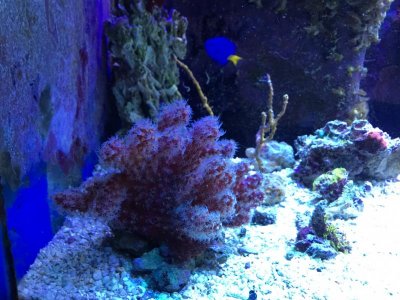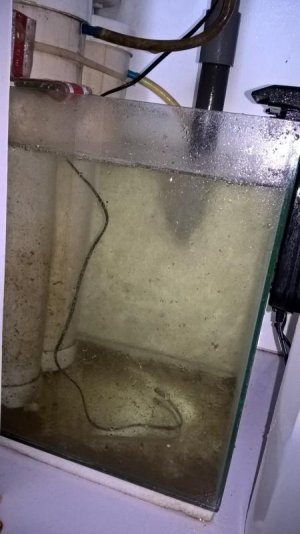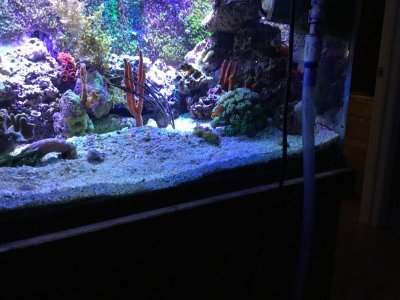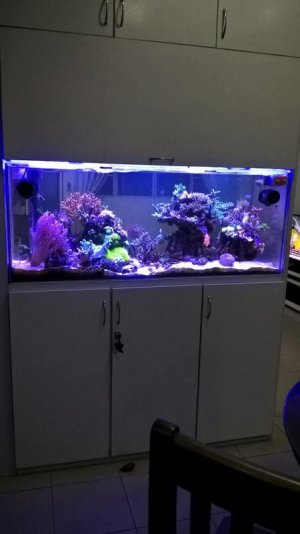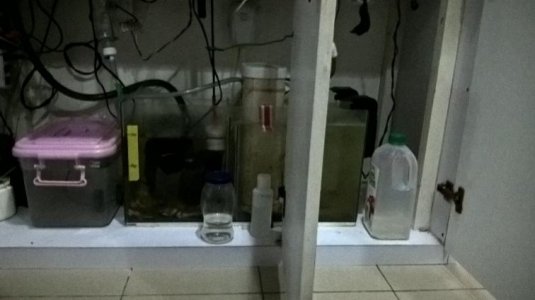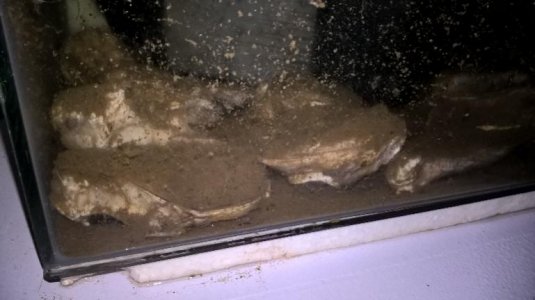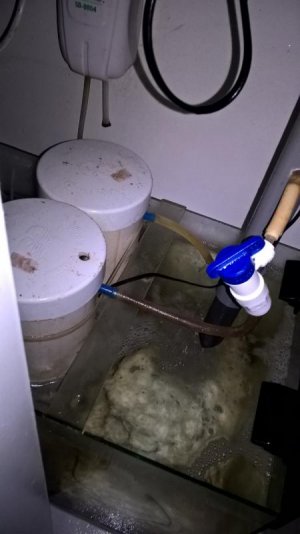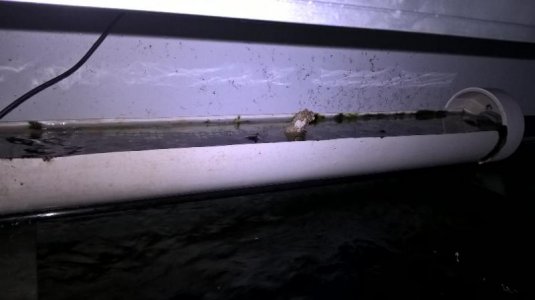The concept of the Jaubert Plenum came from two independent sources. Bob Goemans coined NNR (natural nitrate reduction). Professor Jean Jaubert, curator of Monaco City/state aquarium is the namesake.
NNR refers to de-nitrifying bacteria in a reducing oxygen environment that scavage an oxygen molecule from NO3 to produce a free nitrogen gas molecule. This is the only true nutrient export mechanism that requires no equipment or human intervention. Bacteria rule!
However, I am not interested in exporting nitrate. Why should I remove a major nutrient in the game of life on earth? Redfield Ratio 106:16:1. I say, learn how to manage nitrogen and grow your reef.
Back to my 25 year old Jaubert Plenum at 6" deep with aroggonite substrate that is 3mm-5mm in diameter. Included with this 75G tank is a mud macro refugium. Three months ago, I turned out the lights on refugium, composted tomatoes with macro, added rock seeded with sponges and call it an"cryptic refugium". A refugium processes nutrients and feeds tank live zooplankton. Refugiums do not need light to process nutrients. Micro fauna and fana with snails & pods form food webs. IMO, with lights out in our reefs, there is more food available then with lights on.
So, now that I have discribed changes in 25 yr old refugium, the "œBig Change" is reducing substrate depth at 2"-3" instead of 6". It is a big job with inhabitants in the tank. I am about 70% complete.
NNR refers to de-nitrifying bacteria in a reducing oxygen environment that scavage an oxygen molecule from NO3 to produce a free nitrogen gas molecule. This is the only true nutrient export mechanism that requires no equipment or human intervention. Bacteria rule!
However, I am not interested in exporting nitrate. Why should I remove a major nutrient in the game of life on earth? Redfield Ratio 106:16:1. I say, learn how to manage nitrogen and grow your reef.
Back to my 25 year old Jaubert Plenum at 6" deep with aroggonite substrate that is 3mm-5mm in diameter. Included with this 75G tank is a mud macro refugium. Three months ago, I turned out the lights on refugium, composted tomatoes with macro, added rock seeded with sponges and call it an"cryptic refugium". A refugium processes nutrients and feeds tank live zooplankton. Refugiums do not need light to process nutrients. Micro fauna and fana with snails & pods form food webs. IMO, with lights out in our reefs, there is more food available then with lights on.
So, now that I have discribed changes in 25 yr old refugium, the "œBig Change" is reducing substrate depth at 2"-3" instead of 6". It is a big job with inhabitants in the tank. I am about 70% complete.

